
Media Matters: Swap Patel on Giving People Something Worth Sharing

Over the past 22 years, Swap Patel and his teams have managed the complex needs of various brands, some that spend hundreds of millions in broadcast inventory, like Domino’s, Nationwide, and Kraft/Mondelez, to others that rely more heavily on digital media, like Sherwin-Williams, Crocs, and Ripple.
Swap has spent most of his career at full-service, creatively-led agencies where cross-functional teams of creatives, strategists, account leaders, and media experts collaborate from ideation through optimisation — all to make the most of clients' finite marketing dollars. Swap was also named one of Adweek's Media All-Stars in 2023.
LBB> What pulled you into the world of advertising media? What did you do before you got into media?
Swap> Funny enough, my career path traces its roots back to a TV commercial.
I graduated from the University of Michigan in 2002. The job market that year was volatile, given the aftermath of the dotcom bubble burst and 9/11. I didn’t have a job lined up post-graduation.
As an out-of-state student with loan payments looming, finding a job was urgent and necessary; thus, always top-of-mind. While doing school work one night, a Mastercard commercial airing in the background caught my eye. I recall the spot featuring a college-aged kid getting off a bus while the VO said something like, “Internship at mother’s bank, $5.50/hr. Internship at uncle’s law firm, $6.00/hr. Internship in the music industry, priceless. Apply online…”.
I paused my work, visited the website, and submitted a response to the internship application question: “If you could start your own entertainment company, what would it be, and how would it be different?” With the self-assuredness of a 21-year-old, I wrote: “‘Got Rhythm,’ the name of my future entertainment company, intends to provide the average Joe/Jane with the opportunity of a lifetime — ordering a custom-made bobblehead doll complete with realistic facial features, clothing representative of the ‘bobbling’ owner him/herself, and best of all, the ability to bobble to that individual’s favourite song.”
Amid almost 20,000 responses, I was fortunate enough to be among the 50 students selected for Mastercard’s Priceless Edge internship.
Hosted in Nashville, TN, the internship spanned five weeks and consisted of intense learning covering entertainment law, marketing, production, songwriting, artist relations, and artist management. The experience sparked a passion for the marketing industry, pushing it above the investment banking or consulting jobs I had been considering while in college. A few months later, I landed a job as an assistant media planner at Lowe Worldwide. Fast forward 22 years, and I’m still in the marketing/advertising industry.
LBB> Throughout your career, what have been the most significant changes you've seen in the media side of the industry?
Swap> The media landscape has evolved over the past two decades. In my early days, linear TV and print were mainstays on our media plans. Much of the credit for today's media mix goes to high-speed internet access. Remember the distinctive sounds of AOL? Instead of being relegated to dial-up internet, high-speed internet access led to the widespread proliferation of industries and companies, many of which shape much of what we do and consume today.
Subsequent changes in media consumption habits and industry-related technology advancements shaped where and how we buy ads to reach our clients’ best prospects today. The interconnectivity of it all is fascinating.
AI will likely have an even more significant impact in a shorter period.
LBB> What was your first job in the media industry and give us a taste of the path that your career has been on?
Swap> While in New York, I worked at Lowe and Universal McCann. There, I gained foundational knowledge about media planning and buying, became proficient with tools like MRI/Simmons and AdIntel, and built relationships with sales representatives from media entities relevant to my clients.
In 2004, I moved to Miami to work as a media planner at Crispin Porter + Bogusky. I was intrigued by the agency’s philosophical take: find tension, break category conventions, and treat everything as media. At CP+B, I developed a passion for the “work” — not the creative idea, the strategy, or the media plan in isolation, but a perfect symphony that made the sum greater than its parts.
We didn’t operate in silos (e.g., media, account management, strategy, creative, production, etc.). Instead, we collaborated to produce great work that resonated with people, permeated through culture, and drove incredible business results. Our contributions to the Domino’s business, starting with the Pizza Turnaround campaign in 2009, stand out the most.
At the end of 2012, I left CP+B to lead the media group at McKinney — another full-service agency well-known for its creativity. I’ve been here since, championing the philosophy that everything is media.
LBB> In recent years, which projects or clients have proven to be the most stimulating and satisfying to work on and why?
Swap> At McKinney, we partner with clients across many industries. Over the years, we’ve produced attention-getting work for clients like Little Caesars, Popeyes, Nationwide, Crocs, The Ad Council, Samsung, and Sherwin-Williams.
Sherwin-Williams is our longest-standing client, with fully integrated responsibilities across creative and media. We’ve produced several first-to-market custom integrations with media partners like Matador Network, Zillow, Well+Good, and Brit + Co.
My favourite is Prism, our integration with Apartment Therapy, a leading home décor and design blog. It makes every image on the site searchable by colour and style. Rather than simply reaching the right people with paid ads, we created a utility that helps users search for design inspiration while organically integrating Sherwin-Williams throughout the experience. I love ideas and executions that break convention and meaningfully connect with people.
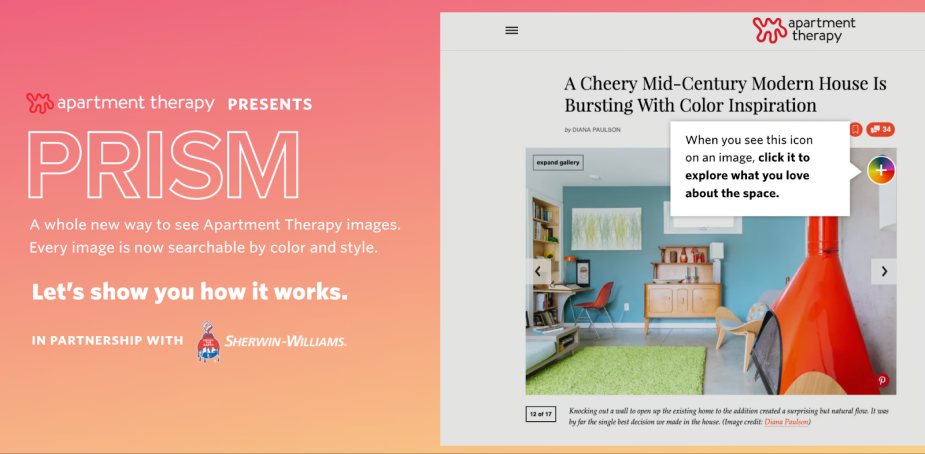
LBB> In media, understanding human behaviour is so important - what are some of the most interesting changes you're seeing regarding how we behave with and interact with media?
Swap> The more things change, the more they stay the same.
While the media landscape is more fragmented than ever before, a marketer’s task is the same: entice potential customers to take a desired action.
While there are fewer watercooler-like placement opportunities (e.g., Super Bowl, Oscars), today’s social media platforms offer the infrastructure for content to spread quickly. People have and will always crave stuff to share with others. It’s up to us to give them something worth sharing.
We have more information about our best prospects than ever. Intent signals indicate where they’re at, what interests them, and more. What we do with that knowledge can make a difference (or not) since people have the power to avoid/ignore content that doesn’t pique their interest.
It’s not enough to buy ad impressions that reach the right people. The message is critical, and synergy between creative and media can amplify a client’s media budget. Attention-getting content breaks through the clutter when we think like people, consider their perspective, and consider the value of their time before figuring out how to add value and formulating campaigns and media plans.
LBB> Brand safety is more important than ever and consumers and campaign groups are increasingly holding brands to account for the media they choose to spend on - what are your thoughts on this phenomenon, and how are you and your teams navigating it?
Swap> We work hard to help our clients shape the perception of their brands. Distractions caused by showing up in the wrong places at the wrong times don’t help. Why let the job get more complicated than it already is? To safeguard all digital buys, we utilise a post-bid pre-impression approach through DoubleVerify, which allows us to validate the actual live impression before an ad is served. If the impression call is deemed fraudulent or not “brand safe,” our ad won’t run.
We negotiate makegoods for media spend associated with fraudulent impressions that skirt the pre- and post-bid brand safety measures. We also regularly update our clients’ brand safety preferences, monitor block rates, and adjust white and black lists within DoubleVerify’s platform to minimise risk and maximise the pool of available brand-safe inventory.
LBB> What do you think are the most pertinent debates happening in the media field right now?
Swap> There are so many, ranging from broad to niche.
- How will AI revolutionise media planning, buying, and optimisation?
- POV: multicultural marketing = mainstream marketing
- How will third-party cookie depreciation impact what we do?
- Increased tension between clients and agencies on the transparency of fees
- The rise of MFA sites and why you should avoid them
For marketers, the media space can feel complicated and overwhelming — unrelenting change driven by technological advancement, the jargon, the depth and breadth of knowledge required, the comfort needed to wade through mountains of data, and more. Regardless of the topic du jour, media experts can add value by distilling complex information into manageable insights that can be leveraged for their client's benefit.
LBB> Decoupling, recoupling, creative agencies trying to build media functions, media agencies creating content studios... what's your take on the relationship between creative and media and where do you think it's going?
Swap> Since not all accounts are fully integrated, the situation (and outcome/impact) often varies. Smaller clients often opt for an integrated agency, which efficiently affords them attention and integrated thinking. In contrast, larger clients tend to choose the strengths of separate agencies (e.g., creative and media) with hopes of them working well together.
Unleashing the potential at the intersection of creativity and media is easier said than done. It starts with a client-led desire, requires philosophical alignment among agency partners, and is highly contingent on having people who can think creatively and analytically.
Where possible, we relish the opportunity to be involved with all aspects of a client partnership, from ideation through optimisation. It allows us to spark ideation from the brief via business, audience, and platform insights and seamlessly funnel data-informed insights from live campaigns into the creative process to drive continuous improvement. It can be a glorious cycle of effectiveness.
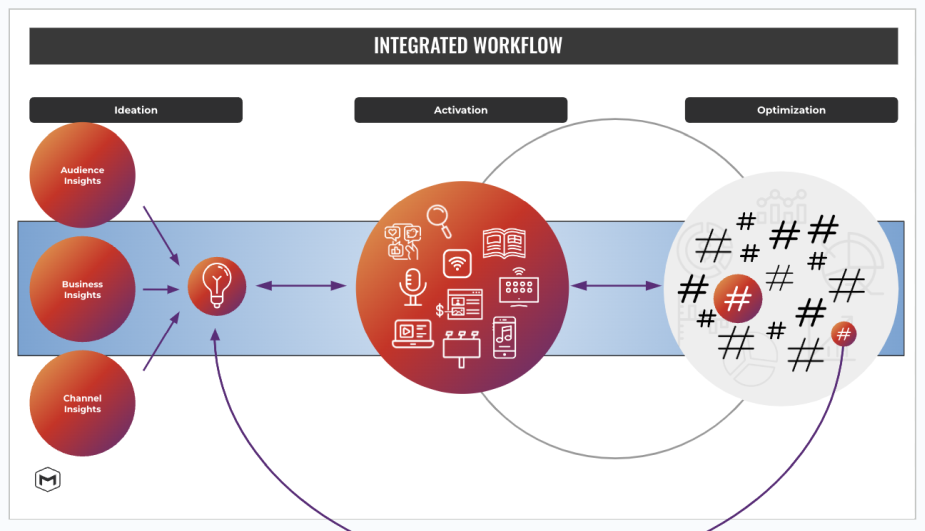
LBB> The wider industry has become obsessed with artificial intelligence, but media has been using variations of Al and algorithmic automation for some time - what's your take on the longer-term influence of Al on media? Are there any aspects of media planning that you think Al could still have a big impact?
Swap> From a media standpoint, we are target and channel-agnostic. Our operating philosophy is reflected in the analogy of having multiple fishing lines in the water, seeing where we’re getting the bites, and optimising accordingly. With an AI-driven, always-on test-and-learn-and-scale approach, we might see strong performance from unexpected segments. Looping in strategists and creatives can lead to more thinking and potentially new work that can drive better, more scalable business results.
To that point, I’m bullish on using AI to create more connectivity between creative and media. Much of what we’ve relied on to date focuses on optimising the media buy. While that is critically important, I’d love to see more AI or human-generated insights flow back into the creative development process. Rather than asking everyone to be more analytical, we can train team members to be more curious about the AI-generated insights and use them to spark ideation with their strategy and creative team members.
LBB> As an industry, we're obsessed with the new - and for good reason. It's often where the money lies! But are there any more traditional forms of media that you think we're sleeping on a bit or that you think still make a big impact when it comes to connecting with consumers?
Swap> Working with the mindset that everything is media opens the scope of possibility and allows for more creativity. You can pair any relevant medium with the right message and make it an influential touchpoint.
People overlook most ads across various media platforms. Intriguingly, the prevalence of this reality presents an opportunity for others to stand out by showing up differently. I also enjoy creating media opportunities that create unexpected yet meaningful impressions.
Here are a couple of examples that I admire:
- Oatly prints entertaining copy on the plastic seal covering their ice cream, a touchpoint that’s often unused, to elicit a chuckle and foster a deeper connection with its customers.
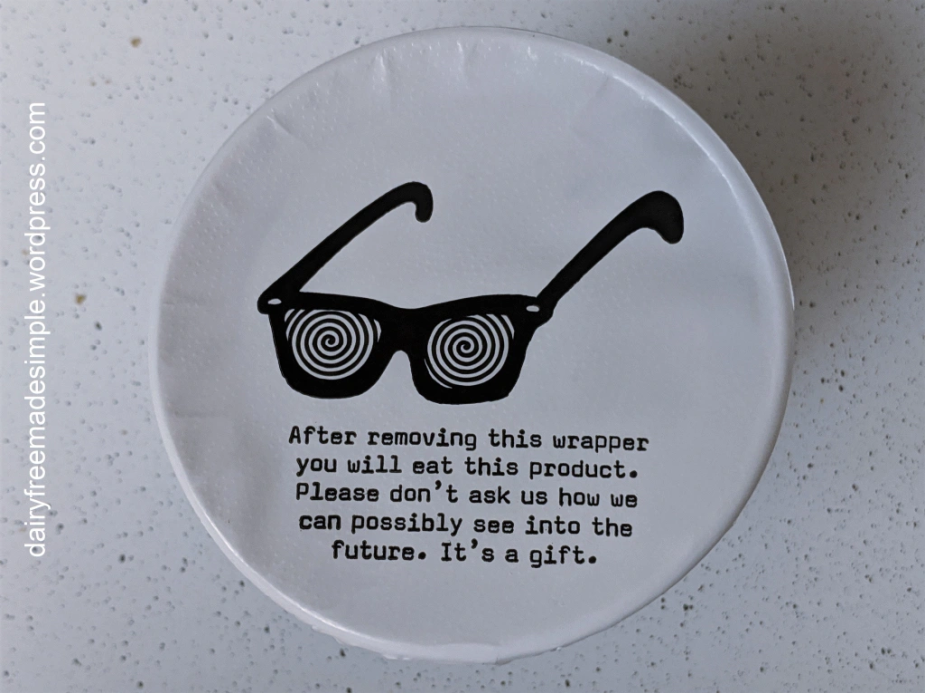
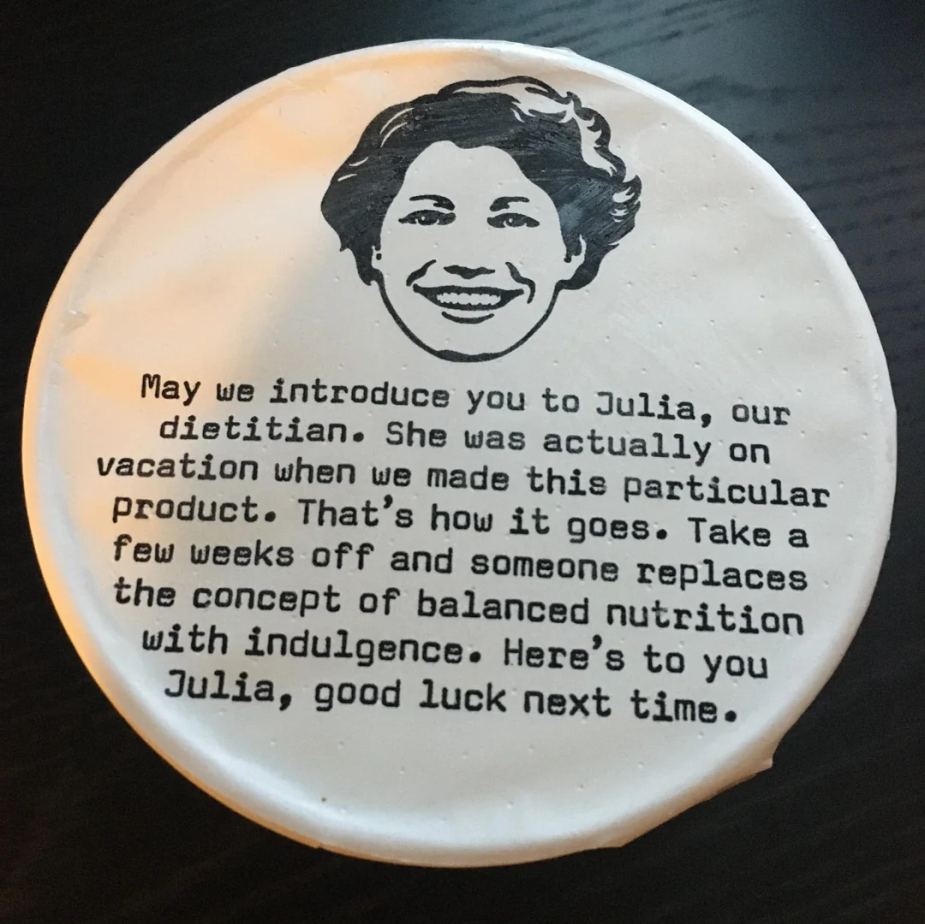
- VanMoof, a Dutch bike company, smartly printed a picture of a flat-screen TV on their bike boxes to reduce shipping damages. Their audience? Delivery personnel who took greater care of the TV-branded bicycle packages and, thus, helped lower damage to VanMoof’s boxes by 70-80%!
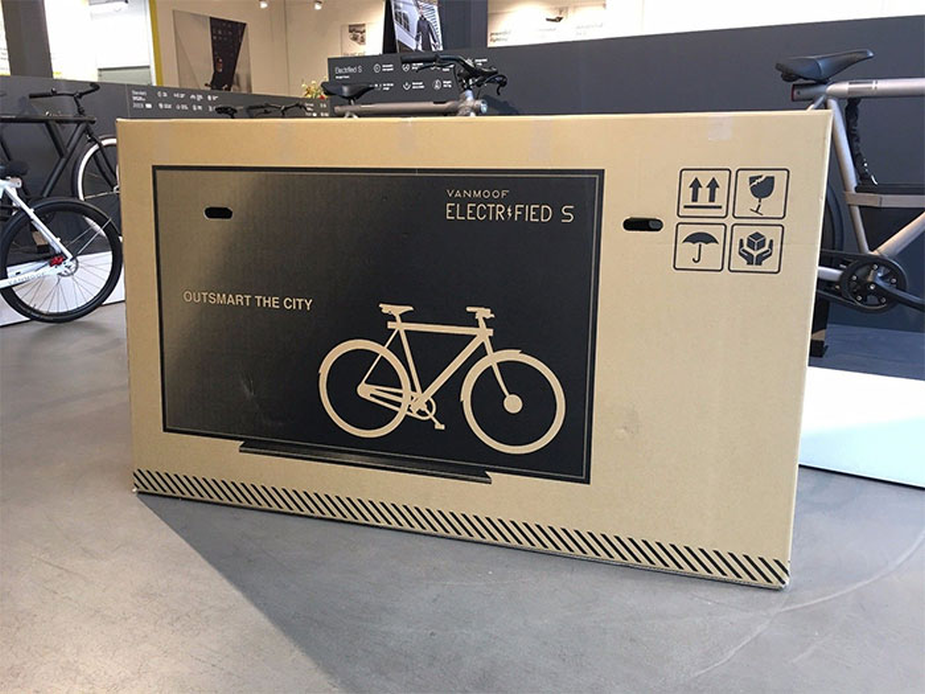
LBB> Who are your media heroes, and why? And what sort of media do you enjoy?
Swap> I am thankful to have worked with and learned so much from Jim Poh, the media director at Crispin, during the agency’s heyday. Jim is a unicorn in our industry—business-minded, analytical, and an ardent champion of creativity.
Below are a few of Jim’s teachings that I still reference:
- “Figure it out” - Be relentless in your pursuit of selling in and bringing smart, business-driving creative ideas to life.
- “Call em’ every five minutes” - Be persistent when collaborating with our sales contacts to bring unexpected ideas to life. See who can do what and work to make it happen.
- “Some money or no money” is a simple negotiation philosophy for direct buys that maximises your client’s media budget. We often find that sales reps across all types of organisations are willing to make a deal. With a few exceptions, you can easily find duplicated audiences elsewhere for a price you’re willing to pay.













